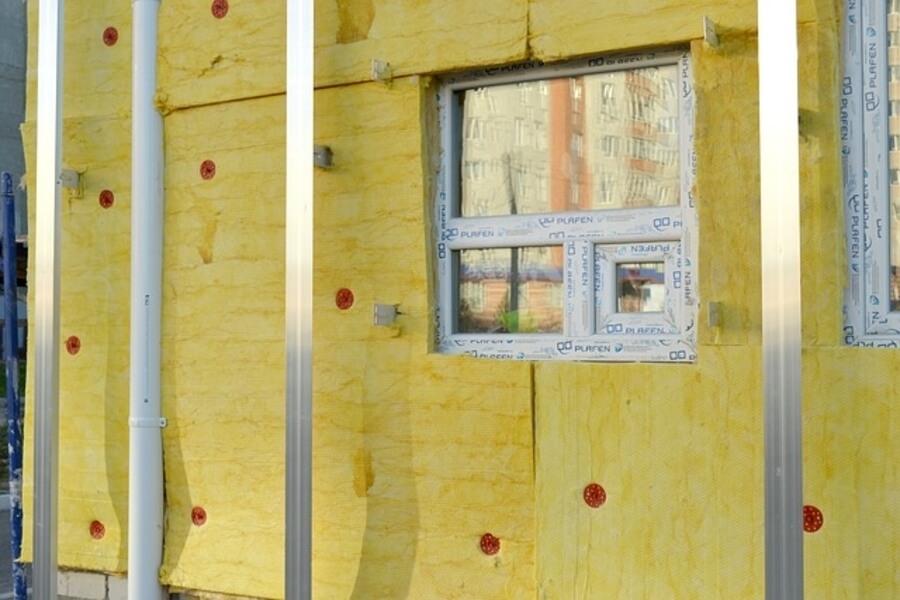
The recent rise in fuel bills has left many people looking for ways to reduce heat loss in their house. However, if your home isn’t insulated well, you may be spending much more on heating it than you need to. Reducing the amount of heat your home loses can help you save money and reduce your carbon footprint at the same time. There are many options you can look at if you are ready to reduce heat loss in a house. These include draught-proofing and installing new insulation boards.
Why Is Heat Loss Important?
Heat loss in a property is important for several reasons. First, if a substantial amount of heat is leaving your home too quickly, you could be paying far more for your fuel than you need to. You may be wasting a great deal of energy trying to keep your home warm, which means your carbon footprint may be much bigger than it needs to be.
Once you have a good idea of how much heat you’re losing in your home, you can start seeking out adequate solutions. By discovering how heat is lost in your home, you can work out what kind of heating solutions are best for your needs. This information can help you determine your energy requirements and how much a suitable system will cost to run. If you’re considering installing a solution such as underfloor heating, you’ll need to find out more about how much heat you’re currently losing. This will help you find a system that delivers adequate heat.
Heat loss is a measure of the transfer of heat via the fabric of your property from the inside to the outside. It can be caused by radiation, convection, conduction or a mix of these. Your heat loss figure will normally be represented by kilowatts (kW) or British Thermal Units (BTUs). Once you know your heat loss figure, you’ll know how much energy you need to keep your room at your required temperature when coldness strikes.
Heat transfer rates are measured in U values. A U value tells you how efficiently parts of a property transfer heat. A building with a low U value will typically be a well-insulated one. If a building has a high U value, this indicates that its thermal performance needs to be improved.
How To Reduce Heat Loss In A House
There are several steps that you can take if you need to reduce heat loss in your home. These include investing in wall insulation, loft insulation and floor insulation. Underfloor heating has also become incredibly popular over recent decades. For more information on the different types of insulation available to you, read on.
Insulating The Home

Adding insulation to different parts of your property can help you reduce heat loss, cut your carbon emissions, and lower your fuel bills. Insulation makes it easier for you to achieve your desired temperature throughout the year, protecting you from the cold during the winter and excessive heat during the warmer months. Another key benefit of investing in insulation is that it can help you reduce noise pollution. Homes that are well-insulated tend to be incredibly energy efficient and require only a modest amount of extra heating and cooling.
The amount you can save by investing in insulation depends on factors like the kind of insulation you’re installing and the size of your property. You don’t usually need planning permission to add insulation to your home. Most modern homes are already well-insulated, but you may require changes if you live in an older property. Wall insulation is crucial as homes lose up to 40% of heat through walls[i]. 25% of the heat lost from a property leaves via the roof[ii].
Floor Insulation
Investing in floor insulation helps you reduce the amount of heat you’re losing through gaps between your floorboards, around your pipes and skirting boards. It’s possible to insulate concrete and wooden floors. Most people only add floor insulation to their ground floors, though it’s somewhat common for homeowners to add it to floors above parts of the home that aren’t heated. These can include rooms above garages. Up to 10% of the heat lost in a home tends to leave through the floor[iii].
When wooden floor insulation is installed, flooring is raised to add special mineral wool or foam between the joists. You can also use sealant to close gaps between your floorboards. If you have a concrete floor that needs insulation, you can add a layer of rigid foam to it. This is often covered with chipboard alongside the floor covering of your choice. Draught excluders can also help you reduce the amount of heat you’re losing through your floor.
Loft Insulation
Loft insulation is one of the most popular options amongst people seeking to reduce their fuel bills. It normally comes in the form of a wood fibre material or glass fibre. These materials are used to create a barrier in your roof to make it harder for heat to escape. You can have your insulation added between your floor joists or the rafters that hold up the roof.
Read More: Loft Insulation Dos and Don’ts
Wall Insulation
Wall insulation is another great option for those seeking to cut the amount of heat they’re losing from their homes. Most UK homes built since the 1920s have cavity walls. As solid walls have no gaps, you won’t be able to fill these with cavity wall insulation. Instead, you can insulate cavity walls by injecting insulation into the cavity. This is normally done from outside of your property. The insulation itself normally comes in the form of polyurethane foam, polystyrene beads or mineral wool.
Unless you have sufficient experience in these areas, it’s normally best to leave things to the specialists when installing insulation inside your home.
Choosing Efficient Heating
There are many different options available to you when it comes to heating your home. These include gas and electric central heating, LPG central heating, using immersion heaters, biomass heating systems and storage heaters. Some methods, such as portable electric heaters, can be costly to run. Each of these has its own series of pros and cons, so it’s definitely worth doing your research before you commit to any alternative way of heating your home.
Underfloor heating may be ideal for your needs if you’re looking for a cleaner way to heat your property. It uses radiant heat technology to warm your home in an energy-efficient manner and requires very little maintenance once it has been installed. The installation process is a safe, simple one. UFH heating also works with all kinds of floor coverings. It is incredibly comfortable to walk on and helps you free up space that radiators and other home heating appliances may have otherwise taken up. UFH also gives you an even distribution of heat, resulting in less waste.
Fitting Double Glazed Windows

Installing double glazed windows is another way to reduce heat loss in your home. With a double glazed window, you get twice the insulation you’d receive from a single glazed window. Double glazed windows are highly effective in keeping heat in your home, are great for preventing external noise from entering your home and are more secure than single glazed windows. They can also keep your home cooler in the summer by trapping some of the rays entering your home. Invest in triple glazed windows, and you’ll receive even more insulation.
Draught-proofing The Home
Draught-proofing your house is another great way to cut the amount of heat that you’re losing from your home. It is a cost-effective method for reducing your fuel bills and allows you to save warm air, so you need less energy to keep your home warm. The draught-proofing process involves blocking gaps that allow cold air into your property and enable warm air to escape. Popular methods of draught-proofing homes include installing draught excluders around doors, filling gaps around skirting boards and floorboards, plus investing in chimney caps.
Keeping Everything Covered
During the colder months, try to cover up as many places where heat might escape as you realistically can to cut your carbon footprint and reduce heat loss. Areas you need to keep closed or covered include doors, windows, vents, fans and gaps where heat might escape. Thick curtains can help you reduce the amount of heat you’re losing via your windows and doors. You can also seal and insulate vents to cut the amount of heat you’re losing through them.
Conclusion
There are many efficient options available to you if you are ready to reduce heat loss in your house. The shocking rise in fuels bills is just one reason why you might wish to make these changes. By following some or all of the above steps, you can make a better contribution to the world around you whilst getting your heating bills under control and making your household budget go further.
Sources
[i] https://www.homebuilding.co.uk/advice/heat-loss-in-a-house
[ii] https://www.homelogic.co.uk/how-much-heat-is-lost-through-the-roof
[iii] https://www.homelogic.co.uk/heat-lost-through-an-uninsulated-floor-the-real-story
